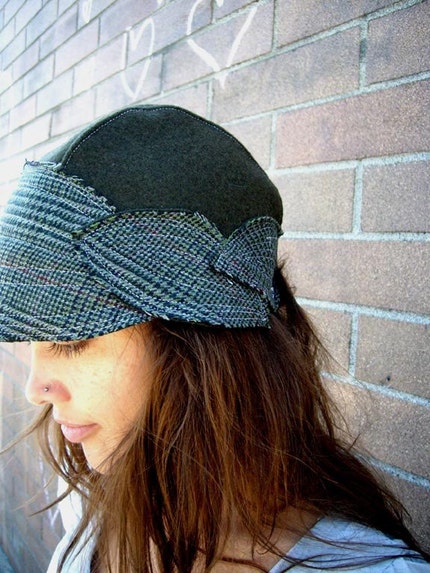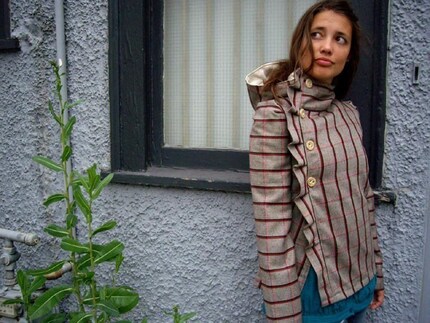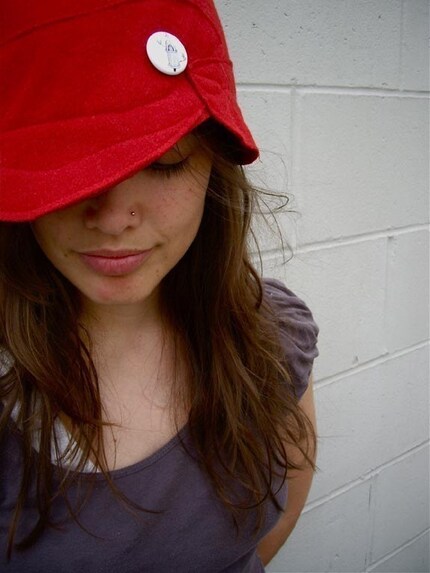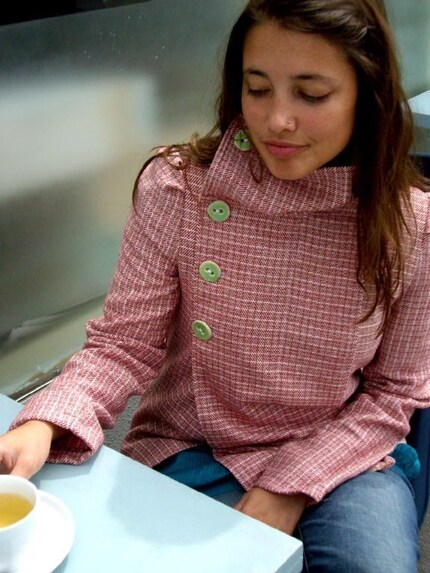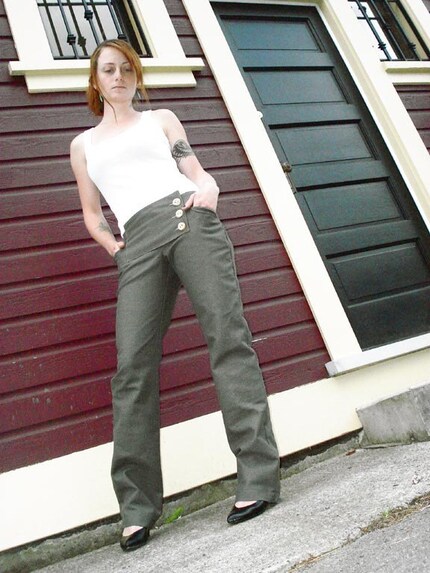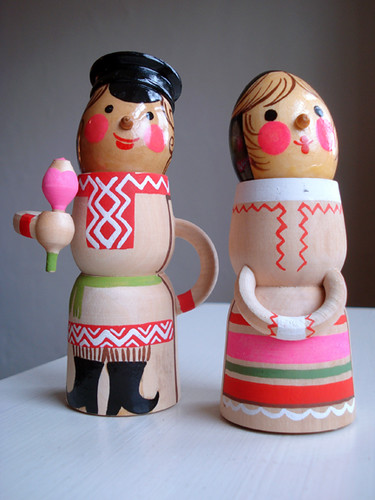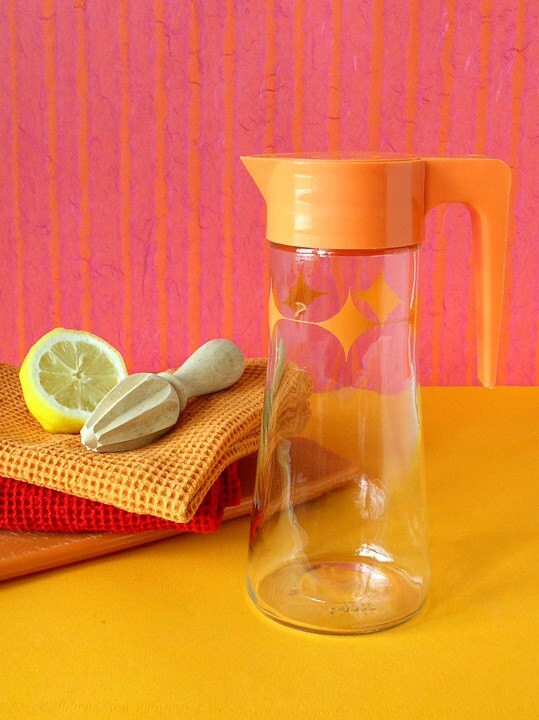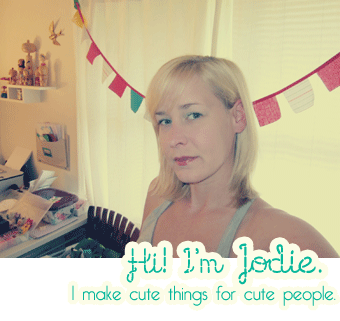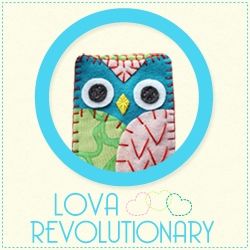MILWAUKEE
THE entrepreneurial spirit of the modern crafts girl should not be underestimated. Faythe Levine, a 30-year-old gallerist, collector, maker and all-around booster of the indie-D.I.Y. crafts movement began six years ago with some sock monkeys and a handstitched felt owl.
Today, Ms. Levine, whose tattooed arms are twined with more hearts, flowers and lettering than a crewelwork sampler, is the proprietor of a crafts store and gallery, as well as the prime documentarian and patron saint of what she calls the handmade nation. She is cited in academic journals, quoted in magazines and newspapers, appears on TV and has been a keynote speaker at arts symposiums.
Back in 2002, however, Ms. Levine was a sometime artist who made punk rock zines. That year, she organized an art show of sock monkeys in her home, sock monkeys being universally appealing objects requiring not much medium, she explained, mostly just socks. She had 80 submissions, most of which sold.
The next year, she began making stuffed felt owls and selling them online; the success of the business — she had orders for 200 at a time — wreaked havoc on her neck and back. Before long, she found herself knee-deep in the alt-crafts world, attending its Lollapalooza-like events and becoming a part of a tight, mostly female, quasi-political community.
“I was going to all these fairs and I remember thinking: Something big is happening. This has to be documented,” Ms. Levine said. “People were writing about it, magazines were starting,” she said, referring to publications like ReadyMade, which started in 2001 and contained projects like Slayer T-shirt pillows, as well as newer magazines like Make and Craft.
“Handmade Nation: The Rise of DIY, Art, Craft and Design,” a feature-length documentary that she financed largely on credit cards, will be shown at festivals and museums early next year. The film (handmadenationmovie.com), which has a cute-spooky soundtrack by Ms. Levine’s band, Wooden Robot (that’s Ms. Levine on the musical saw), portrays the handiwork of groups like Houston-based Knitta (which ties knitted “graffiti” tubes around street lamps) and Jenny Hart’s Sublime Stitching company in Austin (which produces and sells embroidery patterns of space aliens, hypodermic needles and human organs).
It is a sweet-toned record of a new and growing community, one with its own esthetic, lifestyle and economy. “If you don’t like the culture you’re in,” said one young woman at the Renegade Craft Fair in Chicago, voicing the movement’s anti-industrial, anti-institutional and highly entrepreneurial manifesto, “you have to create your own.”
An eight-minute teaser that Ms. Levine posted on YouTube in 2006 caught the attention of the Princeton Architectural Press, which commissioned a book, out this month, with the same title as the film. (Ms. Levine wrote it with her friend Cortney Heimerl, another crafter and curator.)
As of this week, the YouTube teaser has had nearly 90,000 views. Meanwhile Etsy (etsy.com), the online department store for the D.I.Y. set, which claims to have had a million users since 2005, recently received a cash infusion of $27 million from a group of investors led by Accel Partners, a venture capital group that has also invested in Facebook.
Home stores like Urban Outfitters and, to a lesser extent, West Elm, continue to limn the handmade look — the woodland creatures, the deadpan-delicate drawings of nature scenes, “the whole cuteness factor,” as Ms. Levine put it — in many of their products.
Back in Milwaukee, though, Ms. Levine is just trying to pay the rent, cheerfully juggling commitments that sometimes help her do that and sometimes don’t: band practice; an artist’s residency; independent curating; the “Handmade Nation” book tour (Princeton Architectural Press is printing 20,000 copies, a huge number for the house); and other speaking engagements.
Then there’s the administration of Art vs. Craft, the crafts fair she started here in 2004, and running the Paper Boat Boutique and Gallery, a store she owns with a friend, Kim Kisiolek, which sells handmade objects.
She’d like to pay off those credit cards, too ($30,000 would about do it, she said).
For a year and a half, Ms. Levine and her boyfriend, Nathan Lilley, a guitar player in an indie rock band, have been living in a large, airy apartment above the store, in a hundred-year-old brick building that used to house a bar, once the requisite business on nearly every corner of her working-class neighborhood.
The apartment is filled with her “addictions,” as she calls her collections of handmade books, zines, records, paintings, drawings, Outsider art and objects like a crocheted anatomical heart by Merrilee Challiss, an Alabama artist, and a hand-stitched stuffed yellow lion she bought for $50 at a store called ReForm School in Los Angeles.
On a recent afternoon, Ms. Levine wore cowboy boots and a vintage Liberty print dress, its demure flowers a counterpoint to her extensive body art, much of it paid for by bartering artwork. This particular collection — of tattoos — was started when she was 17.
“I’m lucky my taste hasn’t changed,” she said, pulling off a boot to reveal her latest, a zebra face with a circus headdress that had been inked onto her left calf and was still a bit scabby.
The surface area of one’s skin provides a built-in limit for the collector of tattoos. If one collects three-dimensional objects, however, one is limited only by the ability to pay for storage.
“I have enough for four houses,” Ms. Levine said. “In dreamland, I would open a museum.” She pointed out some of her favorite objects, like a picture by Mike Brodie, a train-hopping photographer, “of my friend Jessie’s shack, which she built from garbage in North Carolina” and a sequined coyote pelt hanging over her bed. (“Sequined taxidermy, how awesome is that!”)
On a linoleum table in the dining room, a mushroom-bedecked vase, crocheted doily and assemblage of tiny carved wooden critters offered the complete ironic-cute dialectic that is the visual arsenal of the modern D.I.Y. esthetic.
“My whole place is saturated in it,” she admitted.
Ms. Levine grew up in Los Angeles and Seattle, with parents who were as much at home in the alternative world as she. Her father, Rick Merlin Levine, is an astrologer whose work is syndicated to AOL and Google; her mother, Suzanne Wechsler, is an organic dairy farmer.
“They were always pretty supportive of any creative urge I had,” Ms. Levine said.
Her “gateway drug” into the handmade life, she said, was the zine culture of the underground punk rock scene. That world, with its vegan anarchist collective restaurants and plywood punk houses, its handmade record covers and hand-lettered, stapled newsletters, and its network of fans connected by old-world skills like letter writing, was a Luddite’s paradise of 21st-century homemakers and do-it-yourselfers.
“Everything is mass-produced,” Ms. Levine said. “Here were these people doing things the hard way, making these amazing things. It was the incredibly awesome idea that people were taking the time to do this, and that I could do it, too.”
The democratic world view of the modern crafter — the unschooled, technique-and-judgment-free energy of it all — is what pulls many in. “I’m no seamstress, I can’t hem anything, and I’m too impatient to learn how to knit or crochet,” Ms. Levine said, “but I love just stitching.”
It is also what irritates old-school craftspeople, those who might have come out of the American studio crafts movement of the ’50s, ’60s, and ’70s. Yet their ideals are the same, according to Andrew Wagner, the editor of American Craft magazine, which redesigned itself last year in an attempt to bridge the two worlds.
Mr. Wagner, a founding editor of Dwell magazine, went on to say, “It’s still about working outside the mainstream, and making a living doing what you love. We saw this huge new movement, which Faythe is cast as sort of the poster child for, and it and the old guard weren’t communicating.”
There was, Mr. Wagner said, some real hostility: “The old guard was saying: It took me 20 years to master my craft, and these kids think they can start by just stitching owls.”
“It would be incorrect to say there’s nothing of quality coming out of the D.I.Y. world,” he continued, “but what they bring to the table is what’s important. Their energy is infectious, which is why I call D.I.Y. the punk rock of the craft world.”
In the current issue of American Craft, an article titled “DIY Grows up: The Political Power of the Do-It-Yourself Movement,” chews over the state of the crazy quilt it has become: the fairs awash in money from corporate sponsors, the huge market for the objects sold there and the confusion that has arisen for the makers.
Is a handmade object still subversive if buyers are willing to pay more for it than the maker could afford to pay herself? Do the tight bonds of the community and its micro-economies trump the appetite of mainstream culture for the authenticity those bonds and economies represent?
“The handmade look is definitely a trend everywhere, from the art world to the stores,” Ms. Levine said. “But I think it helps the community, because someone can go to Urban Outfitters and then to a craft fair and relate that look back. It makes it all stronger.”
Still, she said, “I do understand the turn-offs. If you see 100 owls, it’s hard not to get annoyed and bitter.”
Ms. Levine, who receives hundreds of submissions from makers who want to be shown in her gallery, does see a lot of owls. “But even when I turn people down,” she said, “I want to send a message: Don’t stop. What matters is that people keep making things.”















